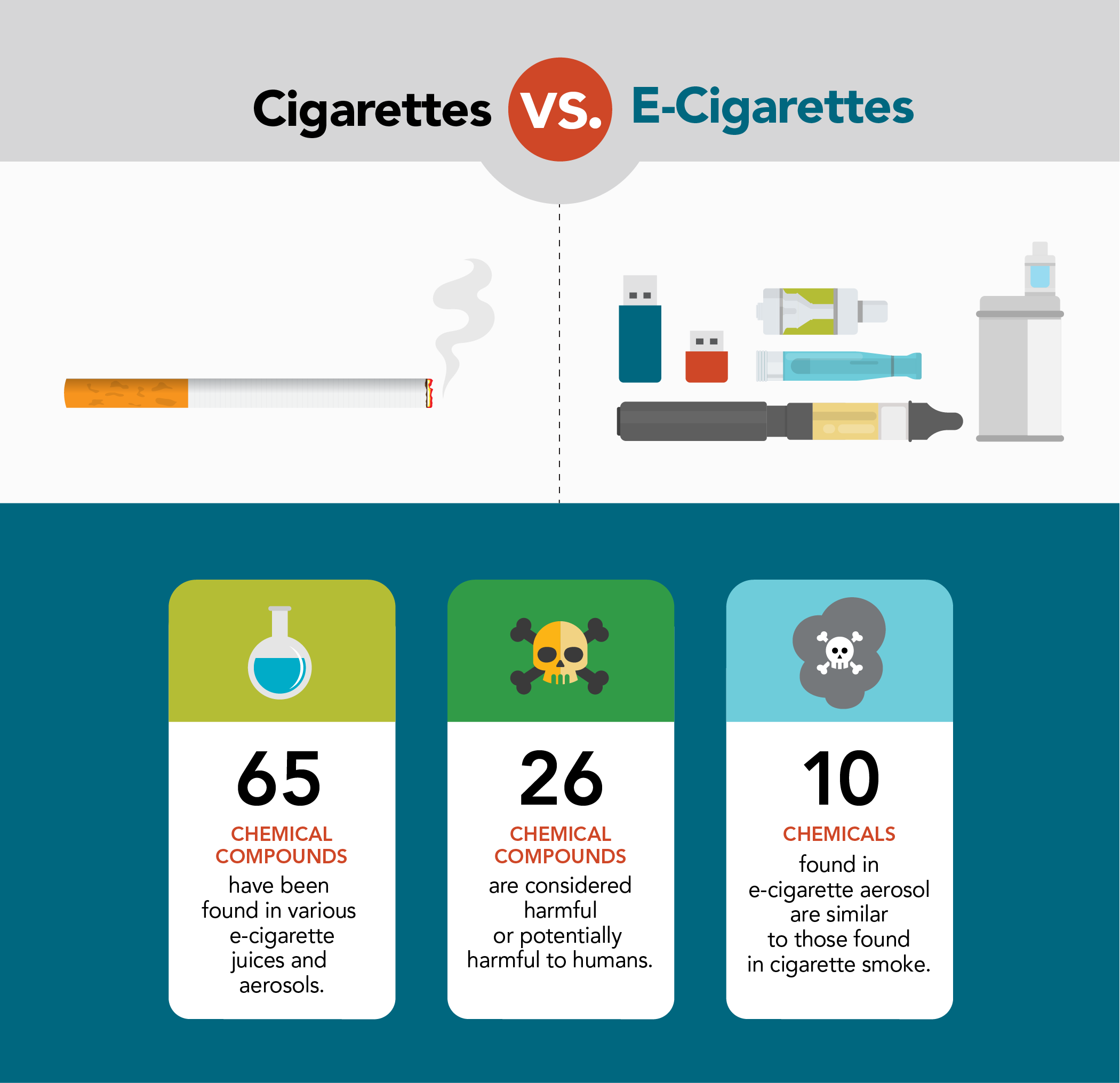
Vaping: What Students Should Know
Nicotine addiction, severe lung illness, and deaths have been reported–vaping is risky behavior!
Many students believe that vaping or Juuling is a safe alternative to smoking cigarettes, but that's not true. The Centers for Disease Control and Prevention reported more than 68 deaths from e-cigarette or vaping product use-associated lung injury (EVALI). Vaping also raises teenagers' risk of severe complications from COVID-19.
Most e-cigarettes contain nicotine, which is highly addictive and can impact brain development. Some e-cigarettes also contain other harmful chemicals such as:
- Tetrahydrocannabinol (THC) – A psychoactive component of the marijuana plant, which may contain Vitamin E acetate for vaping purposes.
- Formaldehyde – A gas often used in building materials, manufactured wood, adhesives, and other materials.
- Cadmium – Metal found in batteries.
- Arsenic – A poisonous substance that is often used to kill rodents.
If you have already started vaping and want to stop but don’t know how, your school pyramid’s substance abuse prevention specialist (SAPS) can help. Please ask your school administrator, social worker, counselor, or psychologist for the name of your school’s SAPS.
What Happens If a Student Is Caught Vaping?
FCPS’ Student Rights and Responsibilities (SR&R) lists vaping as a prohibited activity. Students found in possession of or using vape products on school grounds will participate in an FCPS intervention program and may receive disciplinary consequences, as noted in the SR&R.
Vaping: Myths vs. Facts
There are many mixed messages floating around about vaping. It's time to clear the air. Learn the truth about e-cigarettes from Tobacco Free CO.


